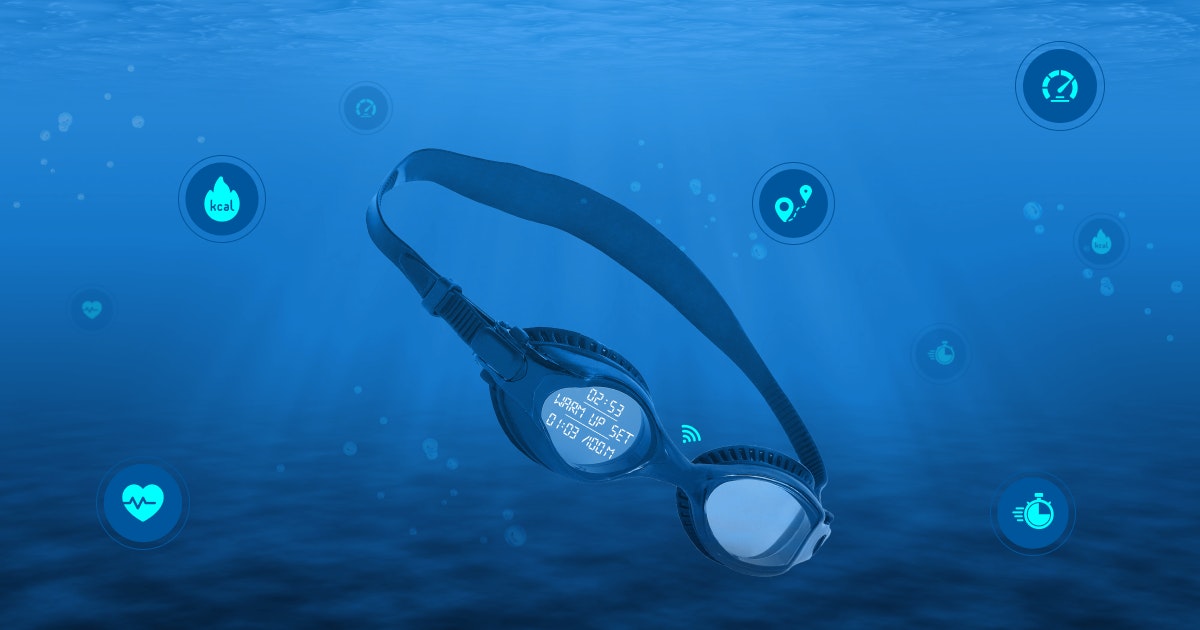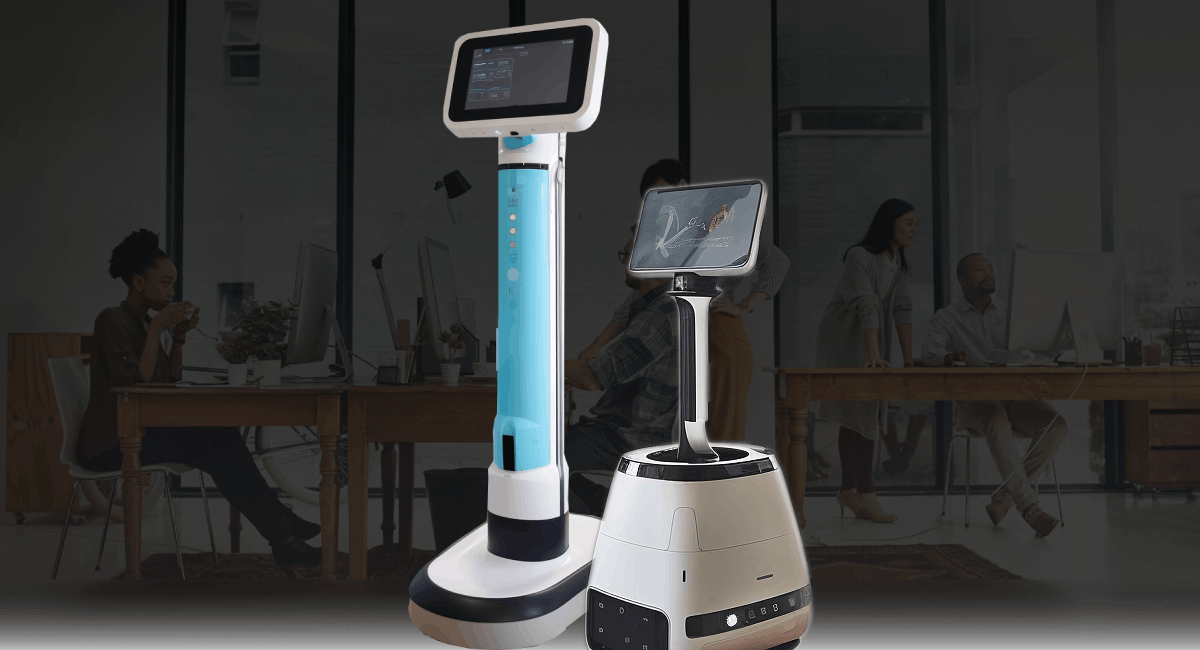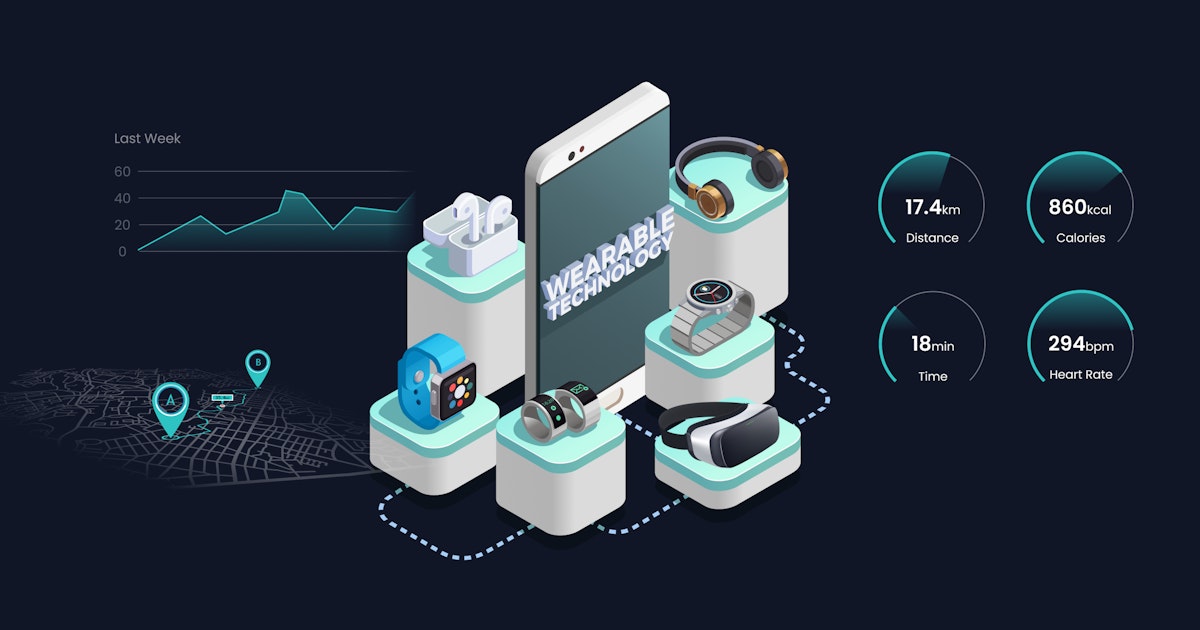Smart swim goggles are revolutionizing the world of aquatic sports and fitness by combining cutting-edge Internet of Things (IoT) technology with the traditional benefits of swimming eyewear. These innovative devices provide swimmers with crystal-clear underwater vision and also integrate a multitude of advanced features that enhance the overall swimming experience.
The global market for IoT-enabled swimming goggles is expected to grow in the next five years, driven by technological advancements, increasing spending on AR products, a rapidly rising number of swimmers, and the rise of swimming pools worldwide.
The US alone has approximately 10.7 million swimming pools, with one pool for every 31 citizens, and nearly 31% of Americans over the age of 16 swim in oceans, lakes, and rivers annually. Despite being priced on the higher end, it seems just about right for the smart swimming goggles to become mainstream.
The cost for a pair of smart swim goggles with a timer, heads-up display, and access to an app is between US$200-300. Some top brands may also require customers to pay monthly or yearly subscription fees to use their full range of products.
Ready to revolutionize swimming goggles with IoT?
Explore NowHow do smart swimming goggles work?
These goggles use a small computer to track more than ten different points of data while swimming. Swimmers can use a smartphone app to customize which metrics they want to see displayed in front of their eyes on a transparent screen on the lenses.
To get started, they must pair their goggles with the app on their smartphone, customize the tracking and recording preferences, and choose which metrics they want to see while swimming. After each swim, the goggles sync with the app to send data for studying and comparing stats from all the training sessions.
While allowing swimmers to track their metrics, IoT-enabled swimming goggles also function as standard swim goggles to protect the eyes from chemicals and bacteria in the water. It is essential to ensure that swim goggles fit snugly to provide this protection.
Benefits of smart swimming goggles
Such goggles monitor swimmers' progress and display relevant statistics and real-time information. This feature empowers them to keep track of their performance and make adjustments to their training as needed. Here are some reasons why smart swim goggles are essential for swimmers:
1. Increased safety
Equipped with sensors and real-time data, these goggles can alert swimmers to potential dangers, such as approaching objects or unsafe water conditions. For instance, judging the depth of the water can be challenging, especially in open water.
Smart goggles can provide accurate depth information, letting swimmers maintain a safe distance from the bottom.
Moreover, the GPS and tracking features found in some IoT-enabled swimming goggles can be valuable for open water swimmers, as they can provide real-time location data and help prevent swimmers from getting lost or veering off course.
This feature contributes to swimmer safety and offers peace of mind to friends, family, and coaches who may be monitoring the swimmer's progress remotely.
2. Accident prevention
One of the ways smart swimming goggles can prevent accidents is by amalgamating built-in cameras and sensors that detect and monitor the swimmer's environment.
These cameras capture underwater images and relay them to the goggle's display, allowing swimmers to see potential hazards, such as rocks, debris, or other swimmers, that might otherwise be obscured due to poor visibility or blind spots.
In addition to visual information, some IoT-enabled swimming goggles are equipped with proximity alerts that notify swimmers when approaching walls, lane dividers, or other obstacles.
These alerts, delivered through vibrations, audio signals, or visual cues, help swimmers maintain awareness of their surroundings and adjust their course accordingly to avoid collisions.
3. Performance measurement
Many smart swim goggles analyze swimming strokes and provide suggestions for improvement. By evaluating the swimmer's body position, kick, and arm movements, these goggles offer tailored recommendations to help swimmers fine-tune their technique. This personalized coaching can lead to more efficient swimming, reduced risk of injury, and faster progress.
4. Self-improvement and skill enhancement
By providing detailed insights into various aspects of a swimmer's performance, these innovative devices instigate them to analyze their swimming techniques and make data-driven adjustments to optimize their performance. Real-time feedback is a crucial component of the self-improvement and skill-enhancement process.
IoT-enabled swimming goggles often come equipped with built-in sensors and displays that offer real-time feedback on stroke rate, lap time, distance swimming, and more. This instant feedback allows swimmers to adjust their technique mid-swim, enabling them to see immediate improvements.
5. Connectivity with virtual coaches or superiors
Advanced smart swimming goggles can connect with virtual coaches or other swim training platforms. This ensures swimmers receive personalized training plans and real-time feedback and even compete with others in virtual races, providing a more engaging and effective training experience
What do smart swimming goggles track?
Real-time stats offered by IoT-enabled swimming goggles include parameters like lap count, lap splits, pace, stroke count, stroke rate, and distance per stroke. Access to these facilitates swimmers to adjust their speed, pacing, or technique immediately, resulting in more targeted and efficient training sessions.
These features include time tracking for real-time information on swim time, rest time, and total time spent in the water; distance tracking to set goals and monitor progress; heart rate monitoring to ensure optimal training zones; set-distance details for progress tracking, lap timer displays for pacing, coach-to-swimmer connection for real-time guidance, and longer battery life for uninterrupted use.
Some goggles can measure water depth to help swimmers optimize turns and underwater techniques. By providing real-time data and insights, these goggles enable swimmers to make informed decisions about their training, ultimately leading to better results and increased enjoyment in the pool or open water.
Future of the smart swimming goggles technology
The continued development and integration of IoT technology in smart swim goggles undoubtedly leads to a more immersive, data-driven, and personalized experience for swimmers, ultimately helping them reach their full potential in the pool or open water. Here is what the future of these goggles looks like:
1. AR displays
As smart swimming goggles evolve, AR technology can be utilized to create a more immersive swimming experience. By overlaying virtual objects or data on the swimmer's real-world view, AR displays could provide essential information during training sessions or races.
For example, virtual pace lines can guide swimmers to maintain a consistent speed, or virtual buoys could mark out a course during open water swims.
Additionally, AR empowers swimmers to compete with virtual opponents or view past performance data as they swim, helping them stay motivated and improve over time.
2. AI analysis
The incorporation of AI technology in IoT-enabled swimming goggles has the potential to revolutionize the way swimmers analyze and improve their technique.
Advanced algorithms could compare their stroke to an ideal model, identifying areas for improvement and suggesting tailored exercises to address them. As the AI system learns from the swimmer's progress, it could adapt its recommendations, providing a continually evolving and personalized coaching experience that keeps pace with their development.
3. Biometric sensors
Integrating biometric sensors into smart swimming goggles can give swimmers a wealth of information about their physiological responses during training or competition.
These sensors measure body temperature, hydration levels, and even stress indicators like cortisol levels. With this data, swimmers can tailor their training programs to better target areas for improvement, monitor recovery, and prevent overtraining or injuries.
An All-Inclusive Guide On The Top IoT Sensors In The Market
Read now4. Environmental sensors
By measuring water salinity, chlorination levels, and water pressure, swimmers can gain insights into how these variables affect their performance and comfort.
For instance, understanding how water pressure changes at different depths can help swimmers optimize their turns and underwater techniques while knowing the water's salinity might inform their hydration strategies during long swims.
5. Waterproof headphones
Including built-in waterproof headphones in IoT-enabled swimming goggles can offer several benefits beyond entertainment. Swimmers can receive real-time audio feedback on their performance, equipping them to adjust without interrupting their swim.
They might also use the headphones to access guided meditation or visualization exercises to improve focus and mental preparation before races. Additionally, the headphones function as a communication tool, letting coaches relay instructions or words of encouragement during training sessions.
6. Wearable technology fusion
The seamless implementation of smart swim goggles with other wearable devices can create a comprehensive ecosystem for tracking and analyzing a swimmer's health and fitness data.
By syncing with smartwatches, fitness trackers, or even smart clothing, swimmers can access a centralized platform to monitor metrics like sleep quality, daily activity levels, and nutrition. This holistic approach enables swimmers to optimize every aspect of their training, recovery, and overall well-being, leading to more effective progress and a reduced risk of injury or burnout.
Best smart swimming goggles on the market
1. FORM Smart Swim Goggles
FORM goggles, developed with the help of Olympic swimmers, are the first IoT-enabled swimming goggles with a screen, which have a display directly in front of the eye on the lens, and come with interchangeable nose bridges.
They offer a more comprehensive range of metrics than Finis goggles, including stroke rate, average stroke count per length, and more customization. They can also be used as a heart rate monitor with a heart rate sensor and are suitable for use in open water and swim spas (with fewer features).
These goggles have a battery life of 16 hours and offer membership with coaching, guided swims, videos, and a community.
2. Finis Smart Swim Goggles
These goggles have a slightly different design than FORM goggles and are newer to the market. The display is located more in the peripheral vision on the left side, and the goggles come with a removable "Smart Coach sensor" that clips onto the side.
They are also noticeably lighter than FORM goggles. They come with interchangeable nose bridges and have a battery life of six hours.
3. Instabeat Swim Goggles
These goggles provide visual feedback to swimmers during their swim. This small device can be attached to existing swim goggles and flashes a colored LED light into the corner of the user's eye. The color changes based on the swimmer's current performance, offering a non-intrusive way to monitor progress.
With real-time HR feedback and automatic stroke detection, Instabeat helps users improve their performance. The HR display breaks workouts into three intervals: blue for low effort, green for fitness, and red for maximum performance, allowing swimmers to train smarter with the improvement they can see.
The colors change on the goggle display, providing instant feedback and allowing users to adjust their workout on the fly. Instabeat has a sleek design without needing a chest belt or watch. Its featherweight, ultra-low profile is designed to fit most goggles. It also includes metrics monitoring with automatic stroke recognition, lap count, and more.
4. Vuzix Smart Swim Goggles
Vuzix Smart Swim is an AR-only solution designed to fit all swim goggles, and it comes in two different customized versions: Lap (Pool) Trainer and Open Water Trainer. The Lap Trainer displays elapsed time, connects coaches to swimmers, records workouts, provides set-distance details, displays a lap timer, and allows users to download and preview workouts.
On the other hand, the Open Water Trainer displays elapsed time, connects coaches to swimmers, records workouts, displays a compass heading, current pace, and total yards, and provides distance information.
5. Zoggs Smart Swim Goggles
These goggles come with standard features, including FogbusterTM anti-fog technology, UV protection, and Curved Lens Technology (CLT), offering swimmers 180° of peripheral vision and unmistakable clarity. In addition, Zoggs offers a range of lens types designed to improve the clarity of vision and reduce glare.
For instance, the Titanium Reactor lens type is a photo-chromatic lens that reacts to the sun's rays and tints according to light conditions.
The Polarized Ultra lens type filters blue light and is ideal for high-level light, especially in direct sunshine, to cut out glare and reflected light. Clear Vision (CV) lens type is designed to amplify light in low-level conditions and reduce the sun's glare, providing excellent clarity and vision.
Key Applications And Benefits Of IoT-Powered Telepresence Robots
Read NowOver to you
In conclusion, IoT-enabled swimming goggles represent a significant advancement in swimming technology, providing swimmers of all levels with real-time data, insights, and guidance to optimize their performance and enhance enjoyment in the water.
By embracing these goggles, swimmers can gain a competitive edge, improve their technique, and stay motivated to achieve their goals. With their ability to provide instant feedback, personalized coaching, and a wealth of performance data, these goggles are an invaluable tool for swimmers seeking to elevate their training and reach their full potential.
If you are a swimming goggles manufacturer looking to integrate cutting-edge IoT technology into your products:
Book a Free 45-minute Consultation with Our IoT Specialists Today!
In the consultation, our experts will:
Uncover untapped opportunities for IoT integration in your swimming goggles
Recommend tailored IoT sensors and connectivity solutions
Outline a roadmap for integrating IoT into swimming goggles
Discuss data management, analytics, and app development strategies






